I am the way and the truth and the life.
No one comes to the Father except through me.
(John 14:6, The King James Bible, 1989)
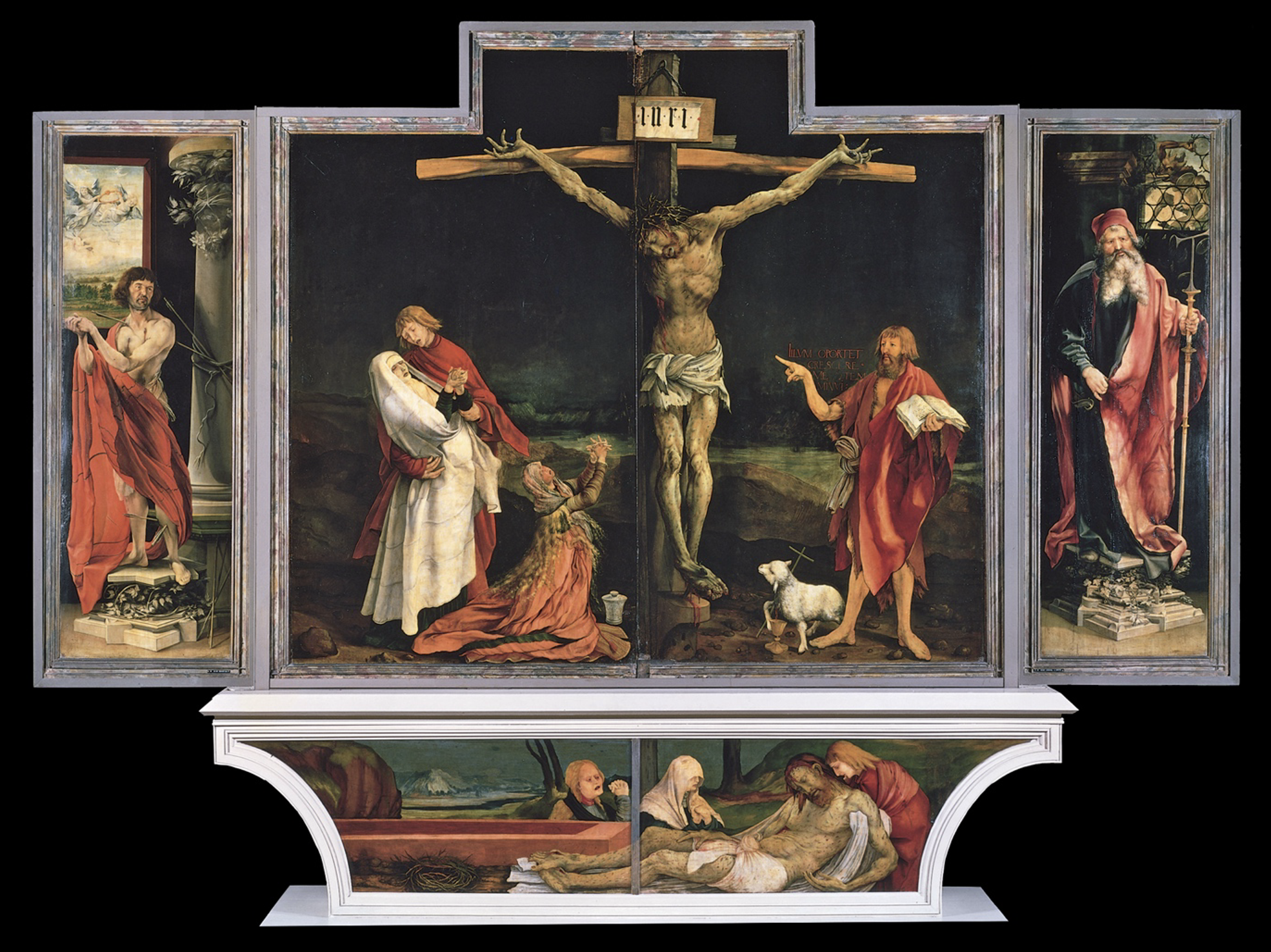
Exhibit 1: Grünewald, M., 1512–1516. Isenheim Altarpiece. (image) Public domain reproduction. Wikimedia Commons. Available at: https://commons.wikimedia.org/wiki/File:Grunewald_Isenheim1.jpg (Accessed 29 November 2024).
Moral values, politics, and globally acepted ethics. Jesus of Nazareth’s impact is undeniable, positioning him as a revolutionary, a spiritual leader, a deity, and an early marketer. His teachings and the narrative of his resurrection laid the groundwork for Christianity and the Church, one of history’s most enduring institutions, which has skillfully adapted his image to maintain relevance across the ages.
The Isenheim Altarpiece by Matthias Grünewald (Exhibit 1), depicts Jesus on the cross, exemplifying the Church’s use of art to generate spiritual reflection and emotional impact, strengthening Jesus’s role as the suffering savior.
According to the Oxford Dictionary of World Religions (Fischer, 2003, p. 483), most accounts of Jesus’s life are derived from Christian sources, with limited independent corroboration. In both art and literature, Jesus has taken on many forms and has been one of the most depicted figures in history – a creative work-around for the biblical commandment forbidding graven images (Exodus 20:4, The King James Bible, 1989).
The Gospels, written decades after Jesus’s death and shaped by oral tradition – show significant variations across the different versions and translations. Cross-references within the Bible (Exhibit 2)


Exhibit 2a/b: Data analysis highlighting where the books of the bible are cross referencing themselves.
Bible Cross References Interactive Visualization (February 2012) Available at: https://www.openbible.info/blog/2012/02/re-visualizing-cross-references-interactively/(Accessed: 5 November 2024).
reflect deliberate efforts by human editors to create coherence by transforming fragments into a unified framework. The division of scripture into pericopes varies across translations, with some aligning while others differ (Exhibit 3). These editorial choices highlight how the Bible has evolved to suit theological and cultural contexts. The development of the Bible – from its Greek and Hebrew origins to Martin Luther’s German translation and the King James Version (Exhibit 4) – demonstrates how historical contexts shaped its current form. Eco (1986, p. 147) highlights, that the Church Fathers, when defining early Christian theology, relied solely on the revelations provided in the Holy Scriptures.
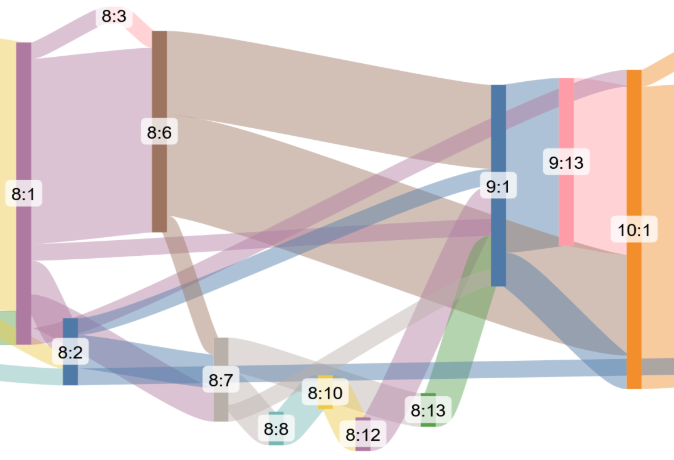
Exhibit 3: Bible Section (Pericopes) Sankey Diagrams (February 2012)
Available at: https://www.openbible.info/labs/bible-section-sankeys/(Accessed: 5 November 2024).

Exhibit 4: Poyser, M., (2005) Bible editions timeline.
Available at: http://biblediagrams.com/diagrams/images%201280×1024/new-testament-bible-editions-timeline.htm (Accessed: 5 November 2024).
William of Baskerville observes in The Name of the Rose, “Books are not made to be believed, but to be subjected to inquiry” (Eco, 1983, p. 338). Despite inconsistencies, Jesus’s vision inspired generations to write, reinterpret, and believe (Exhibits 5, 6).
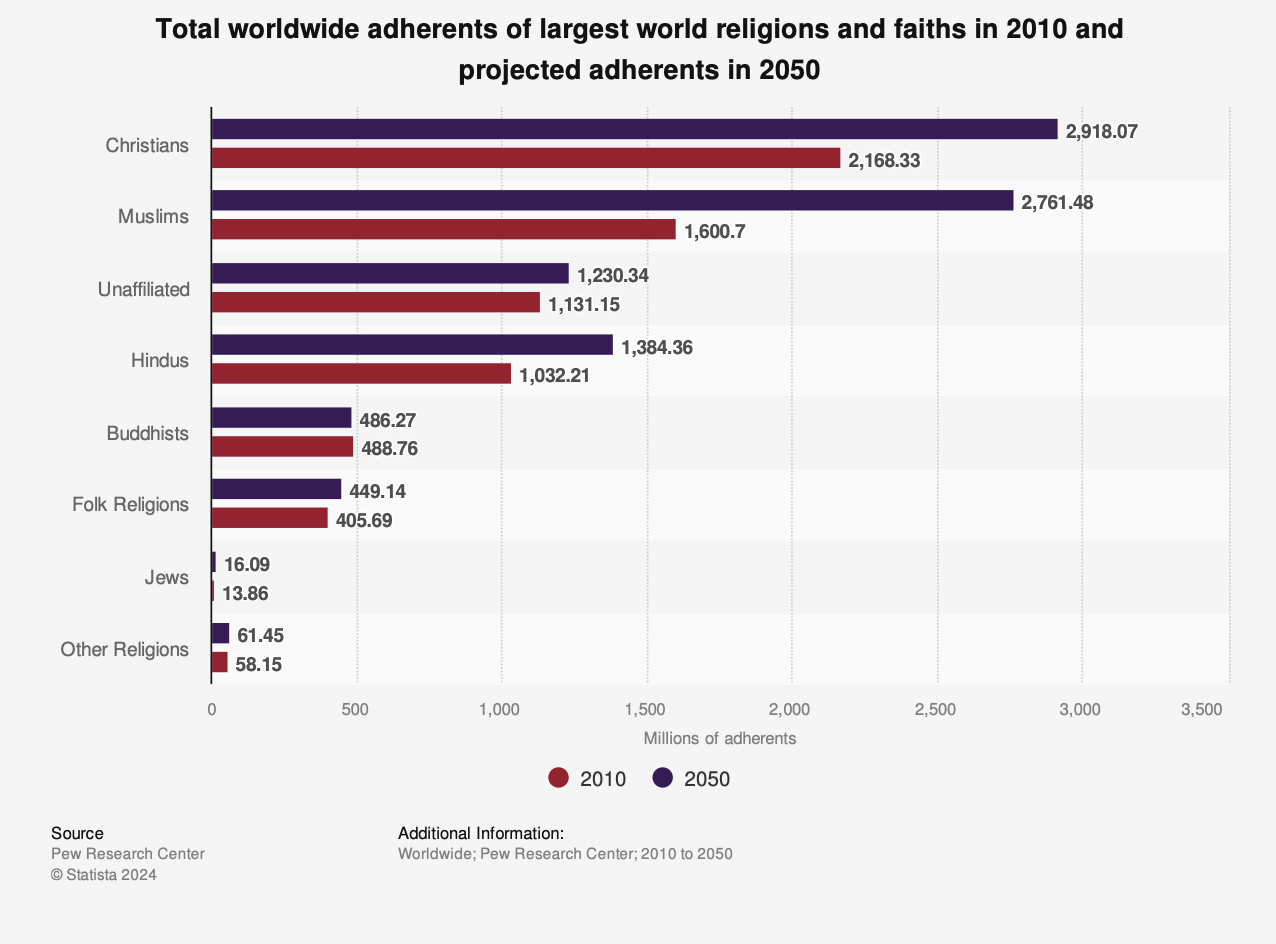
Exhibit 5: Pew Research Center. (2015). Total worldwide adherents of largest world religions
and faiths in 2010 and projected adherents in 2050. Statista. Statista Inc. Available at:https://www.statista.com.iclibezp1.cc.ic.ac.uk/statistics/1350917/world-religions-adherents-2010-2050/ Accessed: November 28, 2024.
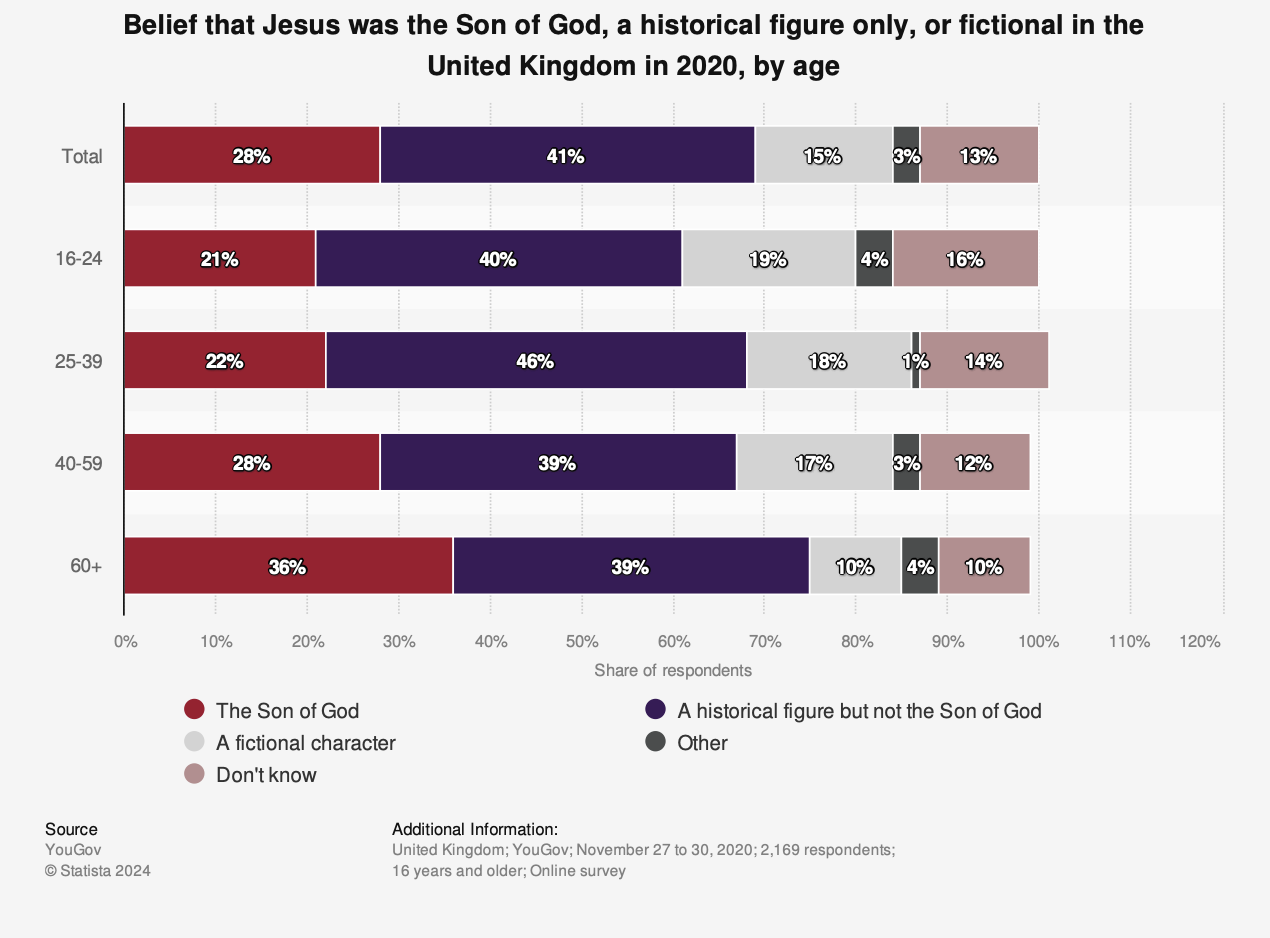
Exhibit 6: YouGov. (2020). Belief that Jesus was the Son of God, a historical figure only, or fictional in the United Kingdom in 2020, by age. Statista. Statista Inc. Available at: https://www.statista.com.iclibezp1.cc.ic.ac.uk/statistics/1399764/uk-belief-jesus-age/
Accessed: November 28, 2024.
Eternal Marketing
If Jesus of Nazareth (c. 6 to 4 BC – AC 30 or 33 / Fischer, 2003, p. 483) is the all-knowing God, as the Bible portrays him, he must have anticipated the Church’s role as his enduring “marketing agency”. His teachings, miracles, and resurrection laid the foundation for a message that would transcend time, and as the Trinity (Exhibit 7) – Father, Son, and Holy Spirit – he remains active.
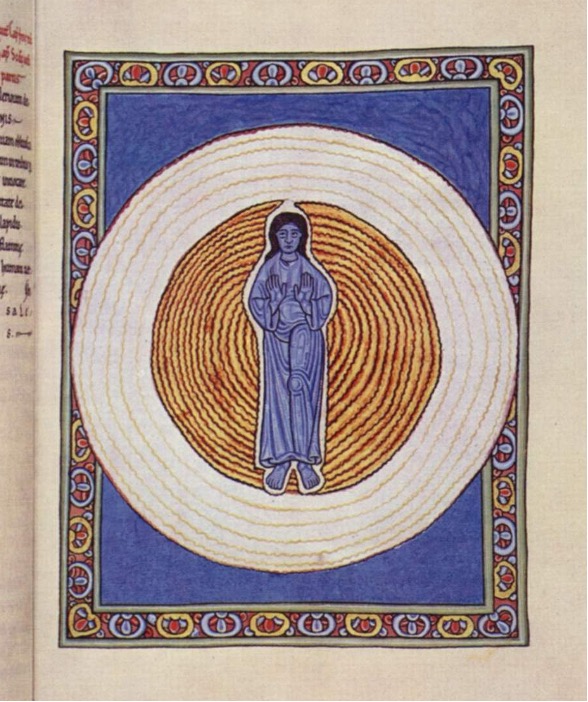
Exhibit 7: Meister des Hildegardis-Codex, Hildegard von Bingen, 1150. The Father, the Son, and the Holy Ghost. Scivias Codex, Rupertsberg. Wikimedia Commons. Available at: https://commons.wikimedia.org/wiki/File:Meister_des_Hildegardis-Codex_003.jpg. / Accessed: November 28, 2024.
The Trinity, while central to Christian theology, has often been criticized for its conceptual improbability. Dawkins(2007) argues, „If you are trying to explain something improbable, it can never suffice to invoke an entity that is, in itself, at least as improbable.“ While the concept of the Trinity is based on faith rather than logic, its symbolic power resonates deeply with believers, reinforcing the Church’s narrative.
Branding, Symbolism, and Conditioning
Jesus’s transformation of the cross into a symbol of sacrifice and rituals like baptism linked spiritual meaning to acts of devotion and belief. As Eco (2019) observes, „Words and images neither create nor bring into being anything in the mind of the addressee … if that mind does not already contain the only possible sign of the experienced reality…“ Symbols like the cross and rituals such as the Eucharist work with believers because they cater to pre-existing mental frameworks.
Jesus’s directive, „Do this in remembrance of me“ (Luke 22:19, The King James Bible, (1989), demonstrates classical conditioning, linking rituals and personal interaction to emotional associations (Eisingerich et al., 2015). His death and resurrection transformed the cross into a universal symbol of redemption. Rituals like the Eucharist foster loyalty and embed theology into memorable sensory anchors.
Crisis Management
Child abuse scandals affect the Church’s reputation deeply. Pope Francis reframed Cardinal Woelki’s “crisis of confidence” stemming from abuse allegations as an issue of individual responsibility rather than systemic failure (Vatican News, 2021). By reframing such scandals through symbolic acts and carefully crafted messaging, the Church tries to preserve trust.
Group Psychology
Employing group psychology, the Church reinforces collective identity using symbols, rituals, and varying modes of communication. This mirrors modern distinctions between Word of Mouth (WOM) and Social Word of Mouth (sWOM) (Exhibit 8). WOM, exemplified by a preacher guiding a believer during confession, fosters intimate trust through one-to-one interaction. In contrast, sWOM reaches broader audiences, leveraging scale and symbolic resonance, as seen in Jesus’s Sermon on the Mount or the Pope addressing millions during the New Year’s message. While WOM builds personal loyalty, sWOM creates shared experiences that anchor communal identity and propagate the Church’s narrative (Eisingerich et al., 2015, p. 121).
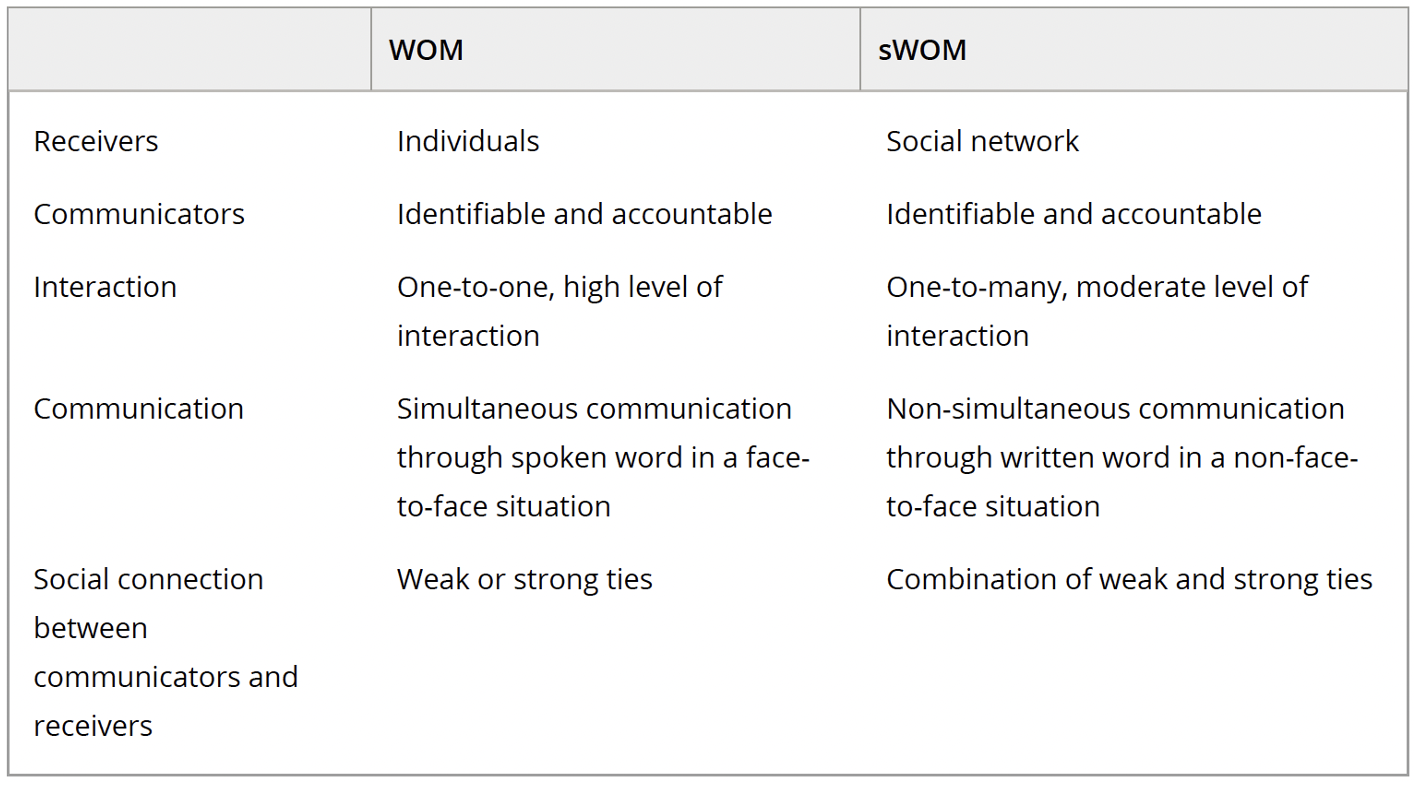
Exhibit 8: Eisingerich, A.B., Chun, H.H., Liu, Y., Jia, H., and Bell, S.J. (2015). Table 1 from: Why recommend a brand face-to-face but not on Facebook? How word-of-mouth on online social sites differs from traditional word-of-mouth. Journal of Consumer Psychology, 25, pp. 120-128. Available at: https://doi-org.iclibezp1.cc.ic.ac.uk/10.1016/j.jcps.2014.05.004 (Accessed: 5 November 2024).
Immersive Sensory Experiences
The Church demonstrates resilience by balancing continuity with adaptation. Sensory-rich rituals, such as incense and choral singing, align with Krishna’s (2011) findings that multisensory experiences ensure emotional loyalty.
The Shroud of Turin (Exhibit 9) exemplifies sensory engagement, offering a profound emotional connection to Jesus’s suffering. Pope Francis described it as “venerated by a prayerful gaze.” (Vatican, 2013)
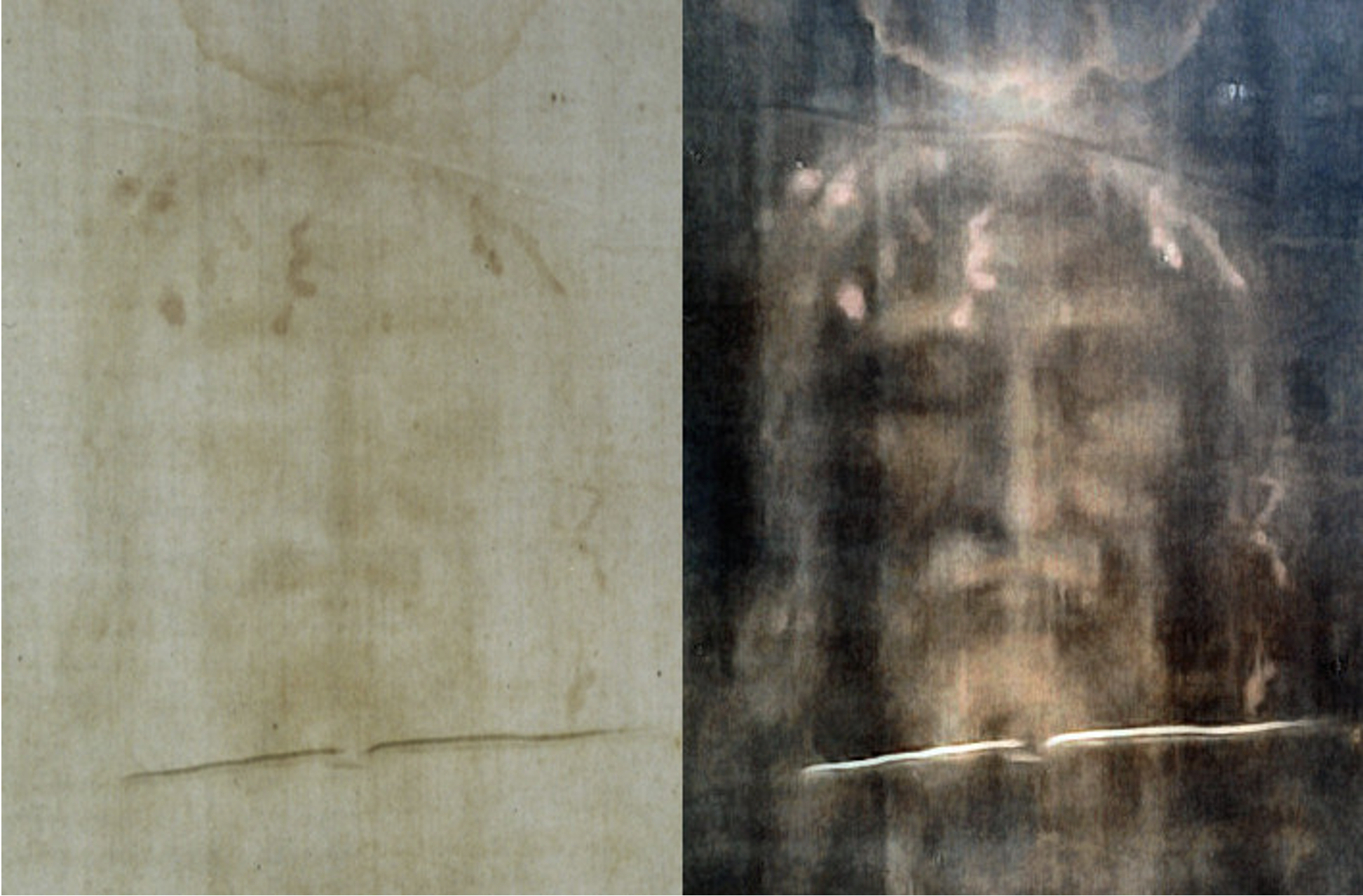
Exhibit 9: Georgoudis, D., (2014). Shroud of Turin. (image) Available at: https://en.wikipedia.org/wiki/File:Shroud_of_Turin.jpg
Accessed: 29 November 2024
Krishna (2011, p. 333) states that “Sensory Marketing implies ‘marketing that engages the consumers‘ senses and affects their perception, judgment and behaviour.’ ” Combined with stained glass visuals and rituals like the Last Supper, these sensory elements enhance engagement and reinforce long-term commitment.
As Sułkowski et al. (2023) explain, the Church often refrains from traditional advertising since sacred iconography and sensory engagement suffice, while advertisements risk confusing religious messages and distracting the faithful.
Takeaways for Marketers
Jesus used powerful symbols, engaging storytelling, and emotional rituals to inspire devotion. The transformation of the cross into a universally recognized symbol is an example of a clear and enduring brand identity. As Bernays(2004) observes, “There is consequently a vast and continuous effort going on to capture our minds in the interest of some policy or commodity or idea” (p. 39), highlighting the deliberate nature of embedding meaning into symbols to influence thought and behavior.
By linking rituals such as the Eucharist with emotional rewards, Jesus created symbols and rituals that reinforce long-term engagement. Zak (2014, p2) emphasizes that “character driven stories do consistently cause oxytocin synthesis.” This principle mirrors modern branding strategies where emotional resonance drives consumer loyalty.
The Church’s adaptability during crises, such as the Reformation, highlights the need for agility in maintaining relevance. Bernays’s assertion that the modern propagandist “studies systematically and objectively the material with which he is working” (2004, p. 72) underscores the importance of transparency and strategic communication in rebuilding trust.
Conclusion
Jesus’s enduring influence lies in his ability to build a narrative that resonates across the ages. His teachings, rituals, and symbols, amplified by the Church’s strategic use of sensory marketing, storytelling, and adaptation, provide insights into consumer behavior.
Jesus’s impact extends beyond theology. Christmas evolved into one of the largest global business drivers, influencing consumer behavior and generating billions annually through traditions that blend spiritual meaning with commercial opportunities (Exhibit 10).
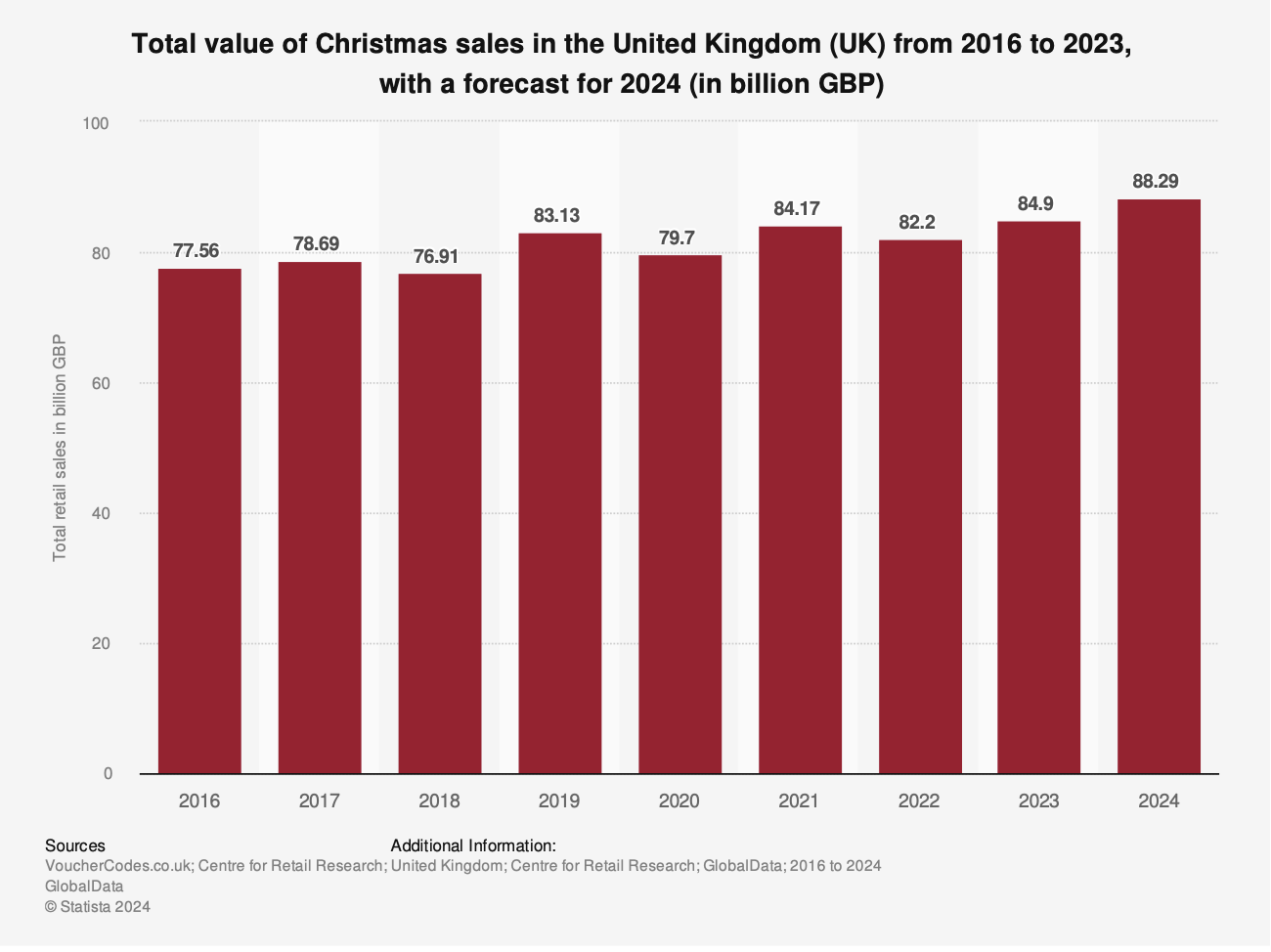
Exhibit 10: VoucherCodes.co.uk. (2024). Total value of Christmas sales in the United Kingdom (UK) from 2016 to 2023, with a forecast for 2024 (in billion GBP). Statista. Statista Inc. Available at: https://www.statista.com.iclibezp1.cc.ic.ac.uk/statistics/792411/christmas-sales-forecast-united-kingdom-uk/ (Accessed: November 28, 2024.)
„The conscious and intelligent manipulation of the organized habits and opinions of the masses is an important element in democratic society. Those who manipulate this unseen mechanism of society constitute an invisible government which is the true ruling power of our country“ (Bernays, 1928, p. 37).
References:
Bernays, E. (2004). Propaganda. Brooklyn: Ig Publishing. Available at: ProQuest Ebook Central (Accessed 9 October 2024).
Bowker, J. (ed.) (2003). Oxford Dictionary of World Religions. German edition. Frankfurt am Main: Fischer Verlag.
Dawkins, R. (2007). The God delusion. London, Black Swan.
Eco, U. (1983). The Name of the Rose. 2004 edn. London: Vintage Books. Reprinted 2014
Eco, U. (1986). Semiotics and the Philosophy of Language. Bloomington: Indiana University Press.
Eco, U. (2019). On the Shoulders of Giants. First Midland Book Ed. London: Harvill Secker.
Eisingerich, A.B., Chun, H.H., Liu, Y., Jia, H. and Bell, S.J. (2015). Why recommend a brand face-to-face but not on Facebook? How word-of-mouth on online social sites differs from traditional word-of-mouth. Journal of Consumer Psychology, 25: 120-128. Available at: https://doi-org.iclibezp1.cc.ic.ac.uk/10.1016/j.jcps.2014.05.004 (Accessed: 5 November 2024)
Krishna, A. (2012). An integrative review of sensory marketing: Engaging the senses to affect perception, judgment, and behavior. Journal of Consumer Psychology, 22(3), pp.332–351. Available at: www.sciencedirect.com (Accessed 9 November 2024).
Sułkowski, Ł., Ignatowski, G., Seliga, R. & Trębska, J. (2023). A Perspective on the Use of Advertising Tools in the Catholic Church in Poland. Journal of Intercultural Management. 15 (4), 178–199. doi:10.2478/joim-2023-0022.
The King James Bible (1989). The Project Gutenberg eBook of the King James Version of the Bible. (eBook) Project Gutenberg. Available at: https://www.gutenberg.org/cache/epub/10/pg10-images.html (Accessed 9 November 2024).
Vatican (2013). Exposition of the Holy Shroud: Video Message of His Holiness Pope Francis. (online) Available at: https://www.vatican.va/content/francesco/en/messages/pont-messages/2013/documents/papa-francesco_20130330_videomessaggio-sindone.html (Accessed 5 November 2024).
Vatican News (2021). Cardinal Woelki takes time out from archdiocese, retains Pope’s confidence. (online) Available at: https://www.vaticannews.va/en/church/news/2021-09/cardinal-woelki-takes-time-out-from-archdiocese.html (Accessed 9 November 2024).
Zak, P.J. (2014). Why your brain loves good storytelling. Harvard Business Review. Available at: https://hbr.org/2014/10/why-your-brain-loves-good-storytelling (Accessed 9 November 2024).

